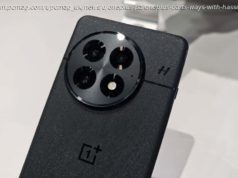This look at eSIM cards compares their functionality and uses to Soft-SIMs and other types of cards with an eye on IoT project deployments and updates.
Let’s be friends:
Comment ( 0)
Join the DZone community and get the full member experience.
Not every “eSIM” is actually an eSIM.
Sounds odd right? If you’re confused about what the term eSIM actually refers to you are not alone. Let me explain. Despite many articles saying that eSIM is actually a SIM in the form of an embedded chip, eSIM’s capabilities are available for all form factors: 2FF (Mini), 3FF (Micro), 4FF (Nano), and MFF2 (Soldered chip SIMs — the one that many mistakenly refer to solely as an eSIM). MFF2 soldered chip SIMs have been available since 2010 and are especially popular in IoT devices, but that doesn’t necessarily make them purely eSIMs, as the carrier profiles are preloaded onto them by the SIM vendor.
eSIMs (regardless of form factor) come with technology and software that provides the ability to remotely provision carrier profiles without having to swap out the physical card or chip inside the device. eSIM (eUICC) comes with a standard that makes it possible to manage, download, and delete carrier profiles over the air. For example: Say you get a SIM from T-Mobile, but later on decide that you want to be a client of AT&T, but you don’t want to bother with swapping out the SIM inside your device. With eSIM, it’s possible to delete the old carrier profile and load a new one to it over the air, but with a regular SIM (UICC), it must be physically removed from the device and changed.
There are some similarities between the Soft-SIM that Apple has been developing for years with Gemalto and an eSIM. While the purpose is similar between the two (Over The Air provisioning), Soft-SIM doesn’t include a physical SIM at all and the provisioning info is stored in the device’s memory. However, in their current state, this makes Soft-SIMs more exposed to hacking and malfunction. As the eSIM solution is based on a GSMA standard, it’s the only globally oriented remote SIM specification, it’s definitely better solution for now.
With phones, it’s not a hassle to take one SIM out and put in a different one, but when it comes to IoT devices, this gets more complicated. As many IoT device makers want to offer a full solution that works straight out of the box, it’s difficult to estimate where the device and SIM might end up in. This makes the eSIM solution perfect for them. For example, when a person buys a Tesla from the United States and wants to ship it to Europe, the car comes with a standard AT&T SIM card that is not carrier-swappable. However, with the eSIM solution they could just swap out AT&T’s profile for a local carrier, saving a lot of time, money, and headache. Another example would be for smart streetlights. If you have thousands of SIMs across a city and the telecom decides to cut support, you could simply migrate the SIMs to a different network over the air, saving a lot downtime and hassle from maintenance.
Free DZone Refcard
Comment ( 0)
Published at DZone with permission
of
Andres Robam
, DZone MVB. See the original article here.
Opinions expressed by DZone contributors are their own.






